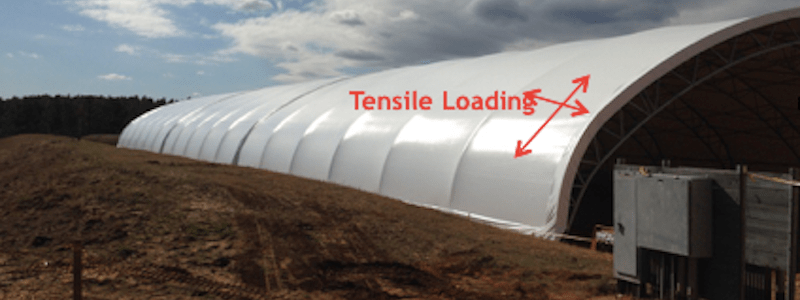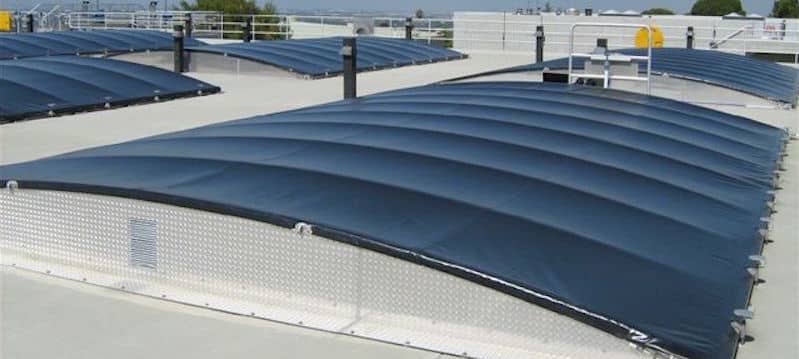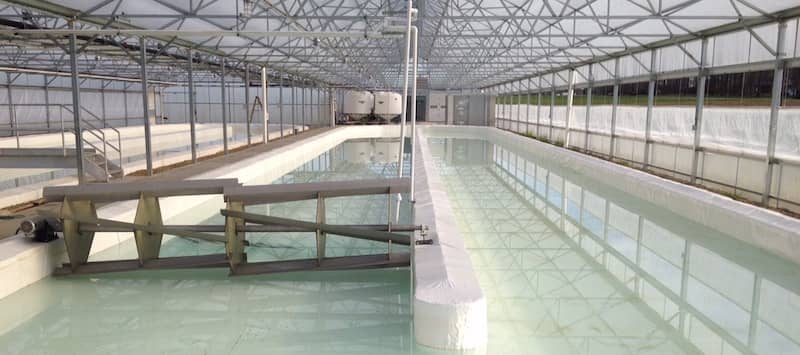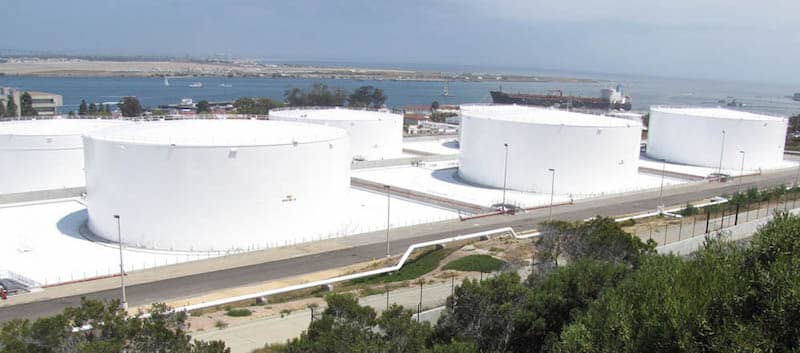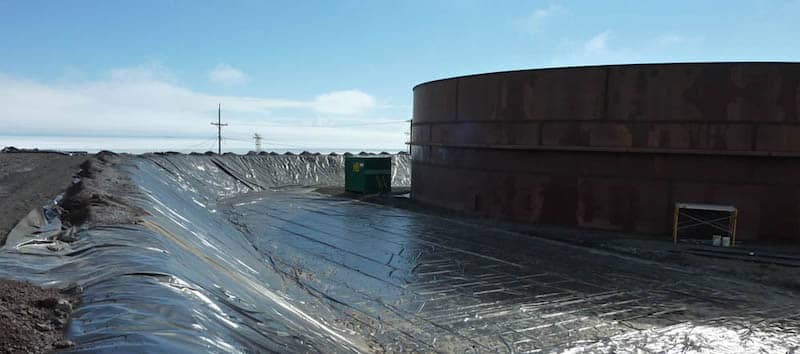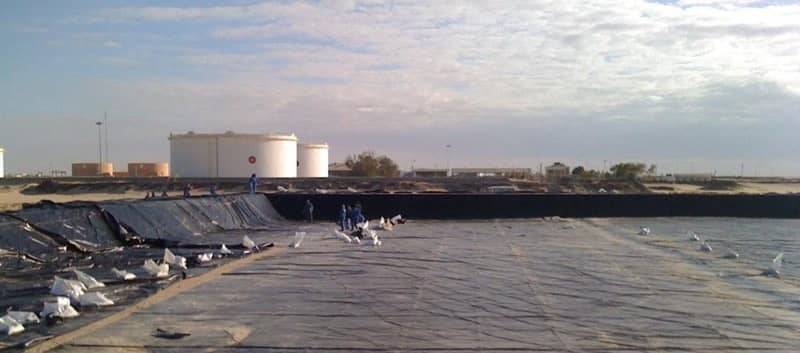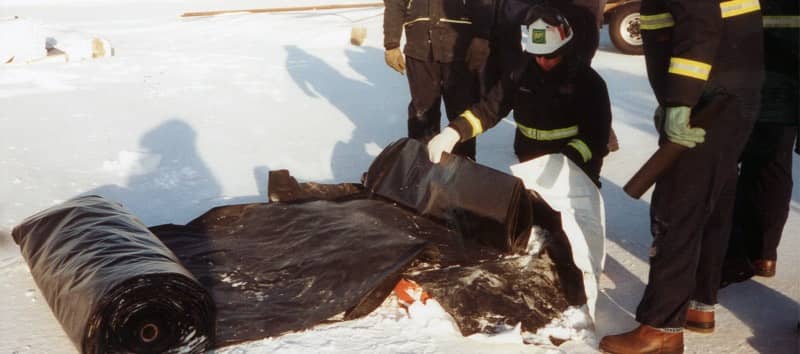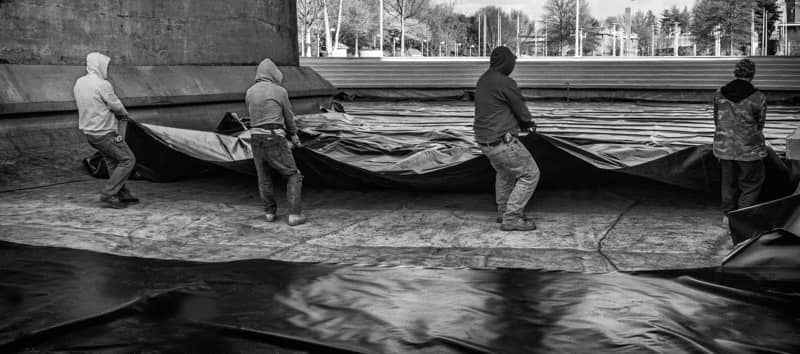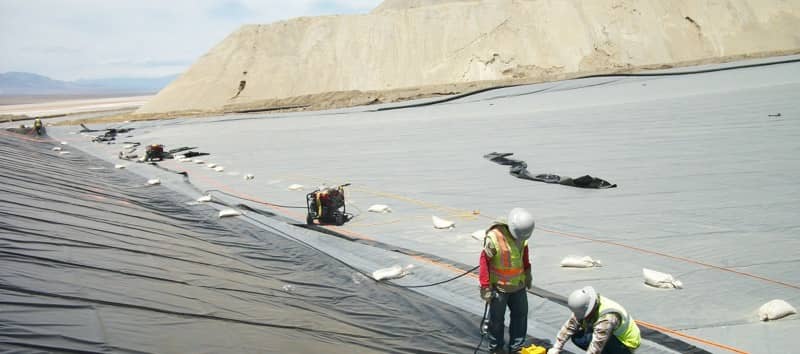One of the toughest measures of the stability for a geomembrane seam is Dead Load Testing, which is found in the Standard Test Methods for Coated Fabrics (ASTM D751 Section 80-83).This ASTM standard applies to coated fabrics only, not reinforced laminates, extruded, or blown film geomembranes. Why is this testing only applicable to coated fabrics? The answer is simple: only a heavily reinforced material will perform in a dead load situation.
When looking for the best way to test your geomembranes, there are many official standards to consider. Material specifications for geomembrane sheets are set by manufacturers, who are also responsible for selecting standards best suited to test the geomembrane and indicate any potential way in which it may fail in the field.
Aquaculture, also known as aquafarming, is defined as the cultivation of aquatic plants and animals in a variety of water environments. As the need for higher volumes of protein continues to increase, so too does the need for aquaculture ponds. For farmers there is another layer of complexity to consider; how to ensure that the plants and animals being harvested are healthy and disease free. This is where geomembranes can offer benefits to the aquaculture industry.
As mentioned in part one of our series, there are a variety of options engineers might consider when specifying a solution for a primary or secondary application. I also listed several advantages of both concrete and reinforced flexible membrane liners (rFMLs) in the last post. Below, you’ll find three additional benefits seen with rFMLs in primary and secondary containment applications.
When considering options for primary and secondary containment in the storage of water, fuels, and industrial liquids, the design engineer may consider several options. Concrete, a common choice, provides several advantages. It is resistant to the elemental forces of nature including UV, precipitation, and variations in temperature. Concrete can provide a stable working platform resistant to traffic forces from heavy equipment used in operations and maintenance. Concrete also offers the advantage of being durable. In a study completed by Swihart and Haynes1 for the Bureau of Reclamation, it was concluded that concrete containment systems could last as long as 40 – 60 years (page 203, Table 18, Canal Lining Demonstration Project, November 2002). With that being said, reinforced flexible membrane liners (rFMLs) are a better choice, as depicted by the following reasons.
Determining and choosing the best geomembrane for your project can be a time consuming process. There are a number of factors engineers must consider, besides overall price, in order to provide clients with the best solution. In order to assist you with your specifications, we’ve written comparisons for a few geomembranes. Below, you will find a comparison of EIA and HDPE.
Many people want to know how long their geomembrane will last prior to signing the check. They ask their consultants about the best ways to test their materials, especially against typical weather conditions of their geographical region. However, there are no simple answers for this question and buyers are often left to worry that their geomembrane might fail.
Last week, I spent part of a couple of days watching an XR-5 liner being installed in an existing, drained pond in Knoxville, Tennessee. Aside from beautiful weather in a beautiful part of the county, it was very interesting to note certain details that you don’t always think about that make or break a successful installation.
Geomembranes are either coated or laminated during the manufacturing process. A coated geomembrane relies on an adhesive coat to bond the exterior coating to the base cloth, whereas, a laminate is dependent on strike-through adhesion of the film to itself and minimal adhesion to the yarn. The combination of the base cloth to the coating/film is important in order to make a long-term durable geomembrane. The result of a highly engineering geomembrane will increase the performance factors below:

